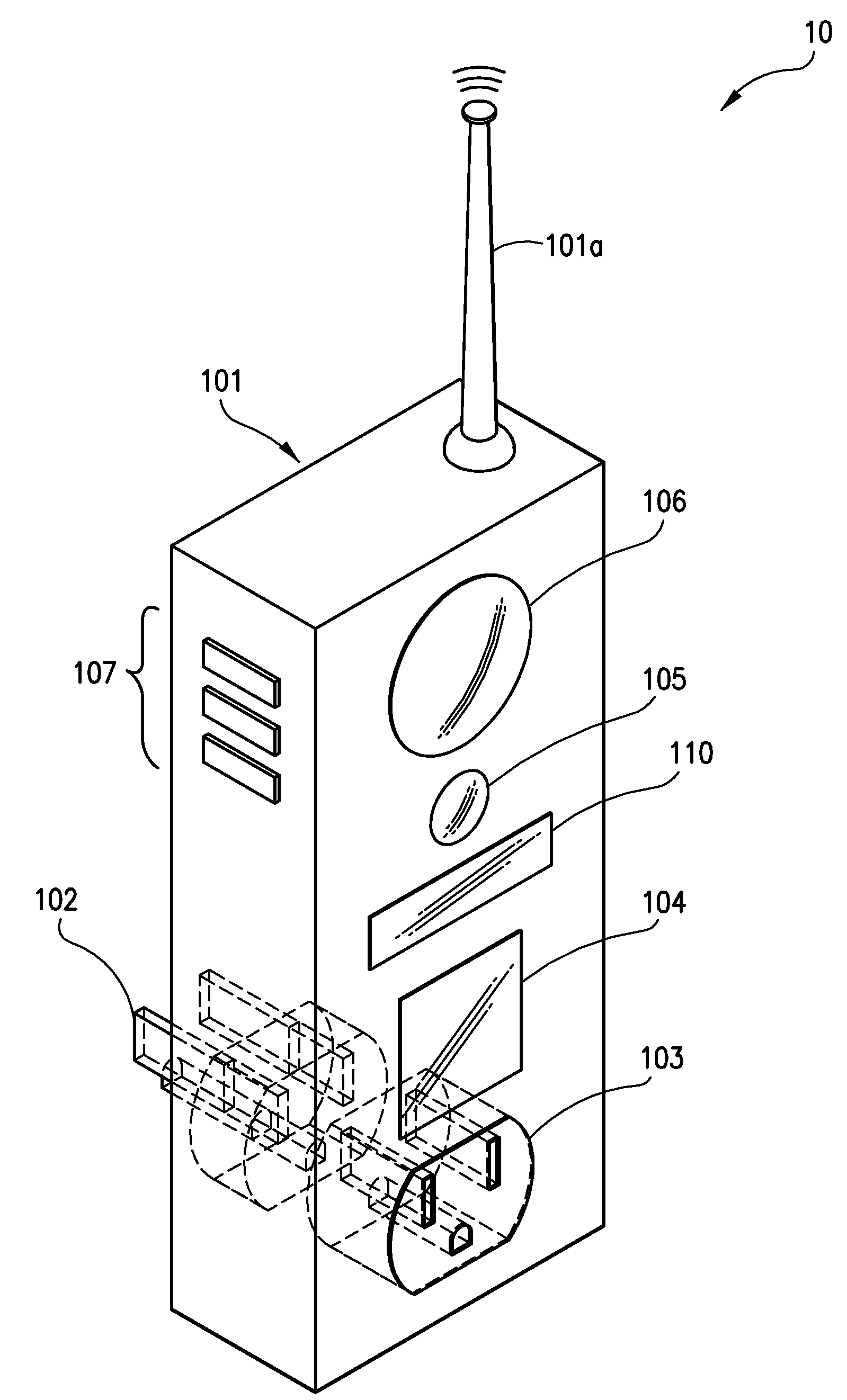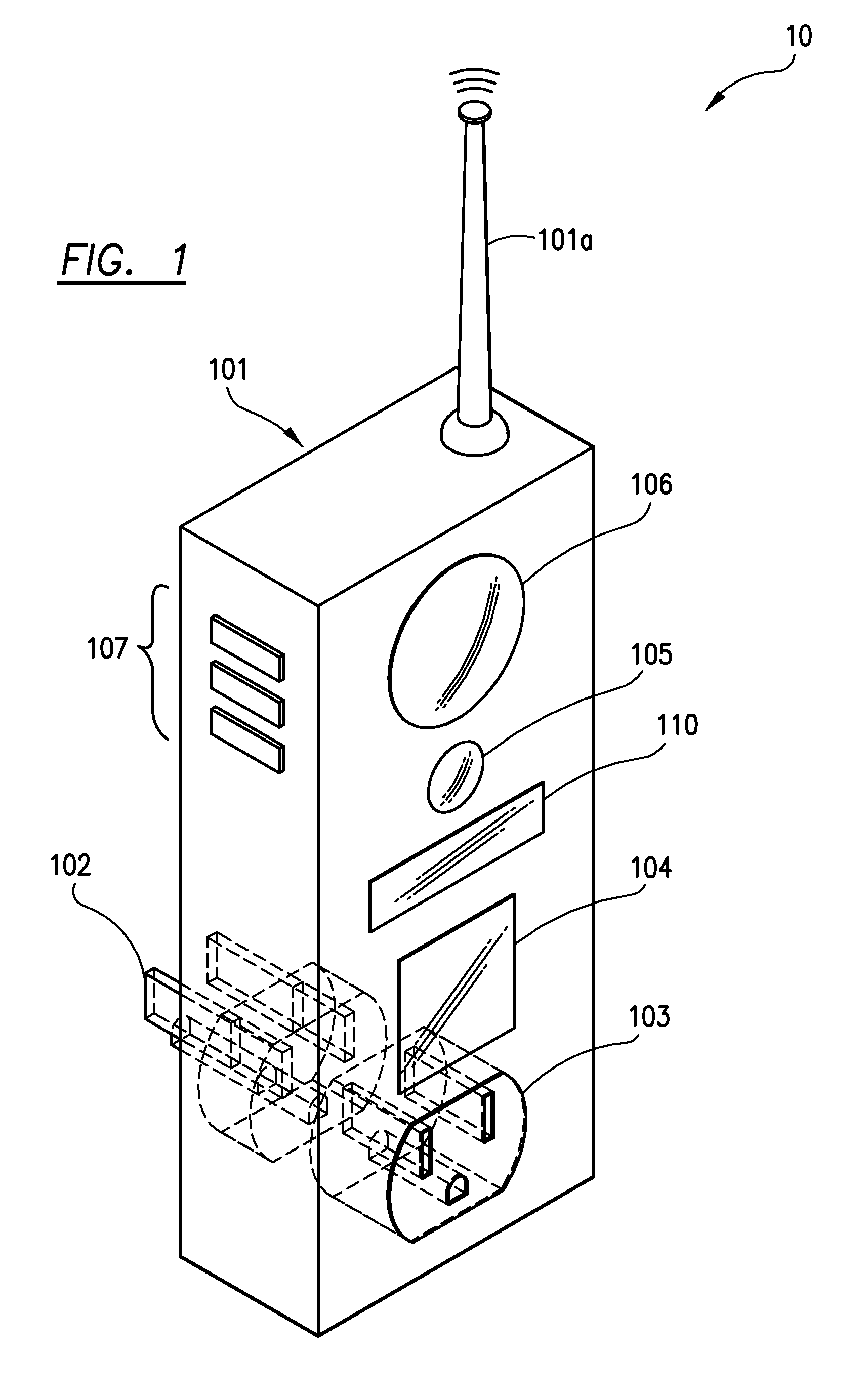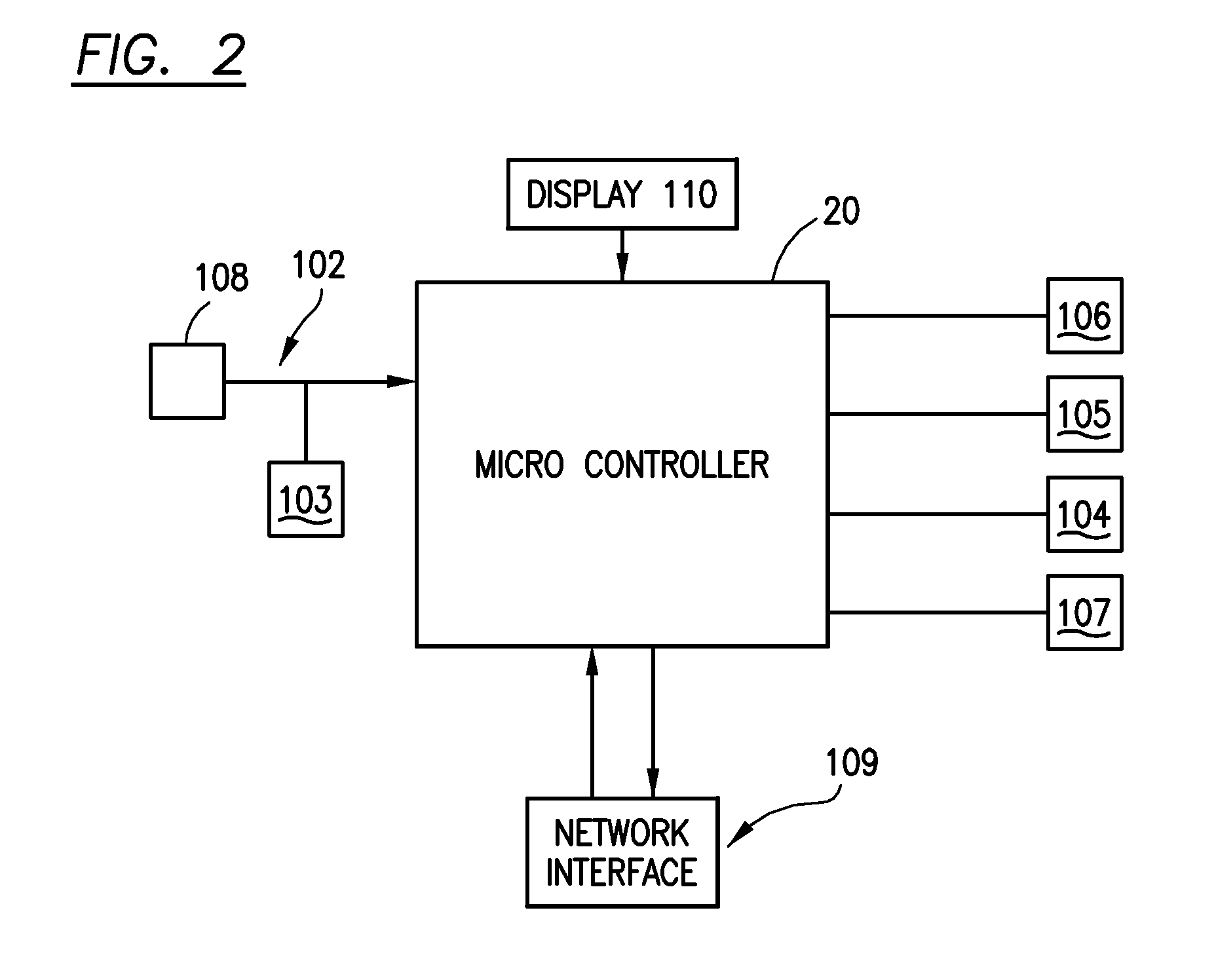Home automation system providing remote room temperature control
a technology for controlling room temperature and home automation, which is applied in the field of home automation, can solve the problems of inability to precisely determine the temperature in each room of the house and alter the performance accordingly, and the remote room at the end of the hall may have significant higher humidity levels and air temperature, so as to achieve precise and accurate environmental control of the entire house
- Summary
- Abstract
- Description
- Claims
- Application Information
AI Technical Summary
Benefits of technology
Problems solved by technology
Method used
Image
Examples
Embodiment Construction
[0030]The present invent comprises a system and method for home automation providing an advanced heating-air conditioning-ventilation (HVAC) system control and environmental regulation. With reference to FIG. 1, the present system and method employs one or more remote thermostats 10 which are intended to be placed strategically throughout a building or dwelling. In some embodiments, the remote thermostat 10 generally comprises a housing 101 which encases and contains the various electric components of the thermostat 10. The thermostat 10 includes an AC plug 102 which is adapted to be received in a typical AC wall outlet. The plug 102 can be configured to be receivable in any type or specification of wall outlets known in the art. A pass-though convenience outlet 103 is provided on the thermostat 10 itself, such that the device does not render useless an otherwise open wall outlet. The thermostat 10 further includes an environmental sensor array 104 and may optionally include a motio...
PUM
 Login to view more
Login to view more Abstract
Description
Claims
Application Information
 Login to view more
Login to view more - R&D Engineer
- R&D Manager
- IP Professional
- Industry Leading Data Capabilities
- Powerful AI technology
- Patent DNA Extraction
Browse by: Latest US Patents, China's latest patents, Technical Efficacy Thesaurus, Application Domain, Technology Topic.
© 2024 PatSnap. All rights reserved.Legal|Privacy policy|Modern Slavery Act Transparency Statement|Sitemap



